We woke up bright and early this morning and had a lovely breakfast at the San Blas Boutique hotel. Nearly everyone reported having slept really well after such a long and exhilarating day yesterday… love those hot water bottles, it must have been down to about 8C overnight, which makes a real change from all our coastal destinations.
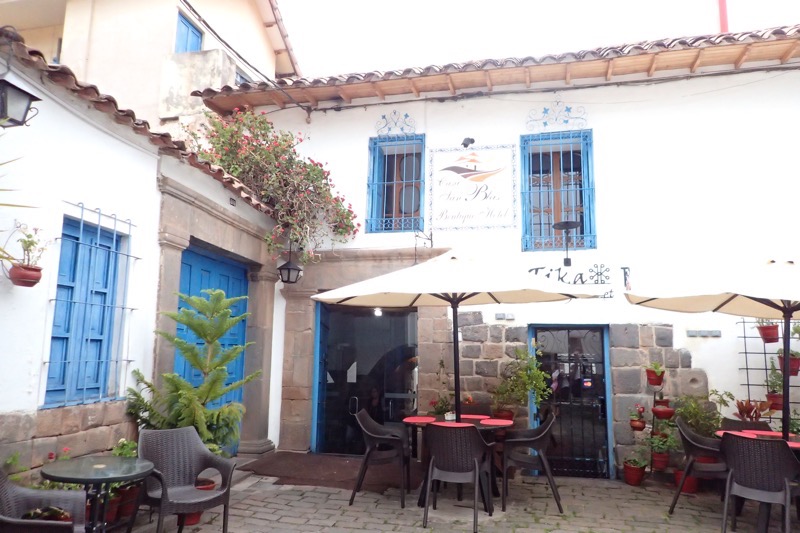
We were out of the hotel fairly early and off on a walking tour of Cusco. Cusco is a much bigger city than any of us were expecting, with a population of around 440,000 people. The city was built on the top of the historic capital of the Inka Empire which lasted from the 13th – 16th centuries, when the Spanish conquest put an end to that. Most of Cusco, in true South American tradition, has been declared a World Heritage Site by UNESCO. It is considered the Historical Capital of Peru (didn’t see much of Lima – but from what did see, it’s not hard to figure out why), and gets about two million tourists every year.
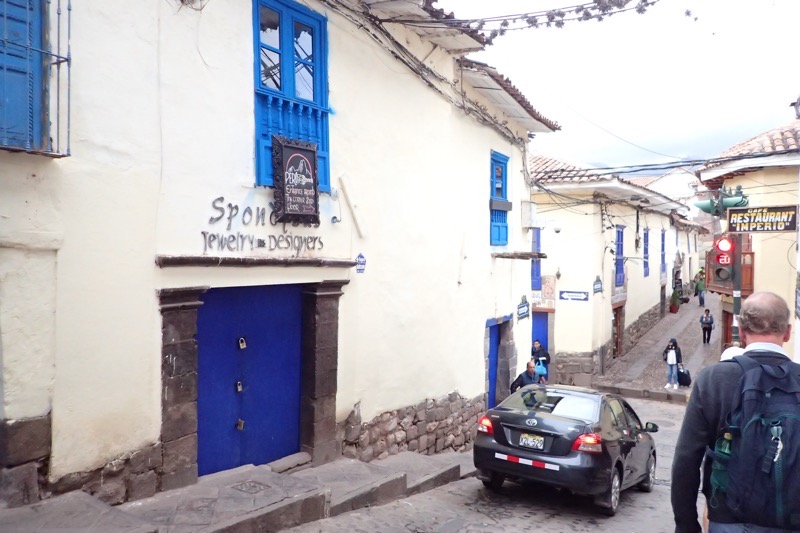
We wandered through quaint winding streets, that are totally not pedestrian friendly – every time a car came down the street, everyone walking had to get up on the narrow, about two foot narrow, ‘footpath’ (and I use the term loosely), to avoid getting your feet run over.
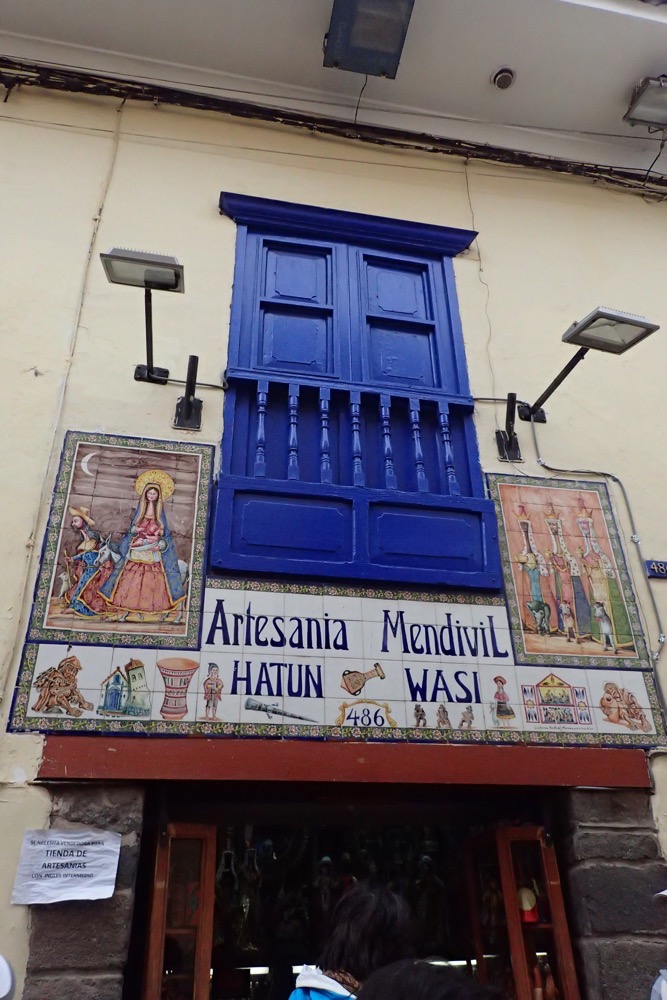
Throughout the streets that we were walking were these puma symbols embedded in brass in the corners of some cobbled footpaths. Some maintain that the city of Cusco was designed in the shape of a puma, which is a sacred animal; but others maintain that it is people’s imagination, (like looking for imagery in clouds), that sees the puma symbol in the lay out of the city. Either way, these symbols are in the footpaths around the city.
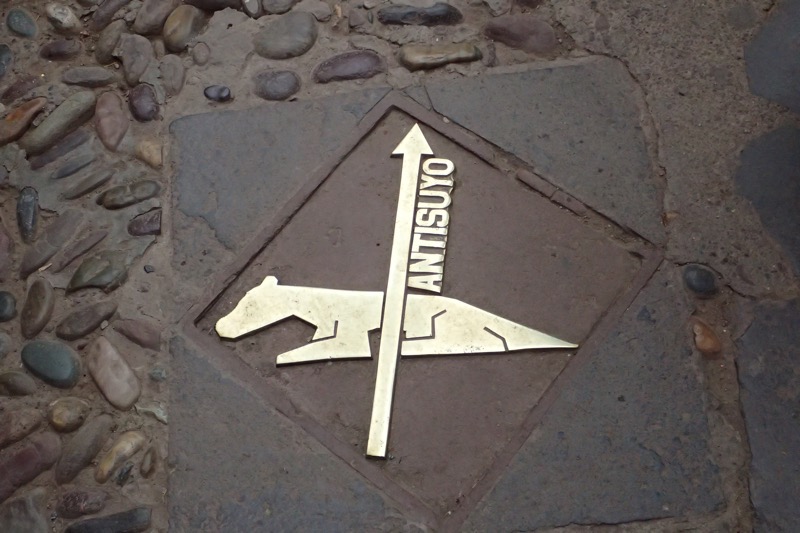
A short walk brought us to an amazing Inka wall in the middle of a shopping street. Luis spoke to us about how the Inka stonework, and specifically how researchers are not really sure how the large stones were quarried and transported to the city.
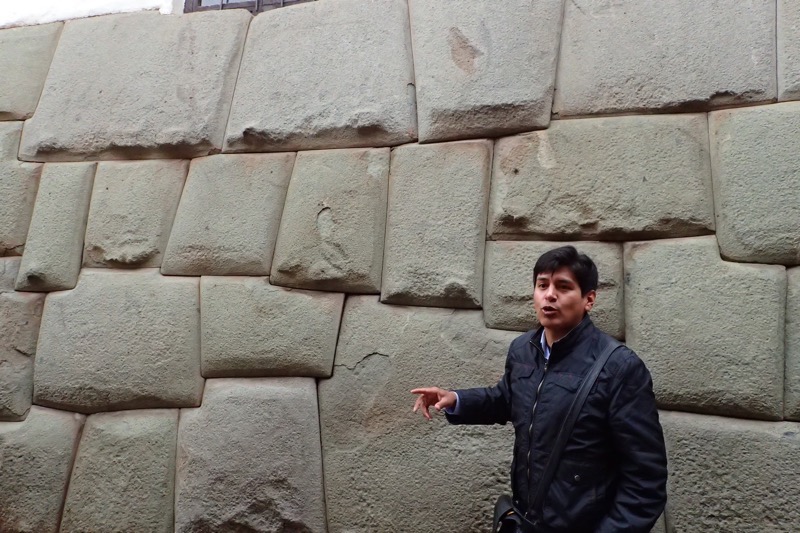
According to Inca (yes, I know I keep interchanging ‘Inka’ with ‘Inca’ but that is because everywhere we went here you would see either variant used, much like ‘Cusco’ and ‘Cuzco’… seems either are acceptable, and I should be consistent but I haven’t the motivation or inclination for editing at this point!) legends, the city was built by Sapa Inca Pacahacuti (also known as Pacahacutek?), the king who transformed the quiet city state of Cusco into the vast empire called the Tawantinsuyu Empire. I’m pretty sure there was a lot more to this story, but as per usual Luis was imparting so much information and there’s me without a dictaphone.
We made our way through town to the Plaza des Arma which is also known as the ‘Square of the Warrior’ and was the site of several important historical events, such as Francisco Pizarro proclaiming the conquest of Cusco. The Square is lined with stone arched arcades and the two enormous Catholic churches – the Cathedral Basilican of Our lady of the Assumption (c.1650) and the Church of La Compania de Jesus (c.1570), which are both constructed in the beautiful old colonial baroque architectural style, both open directly onto the plaza.
the Church of La Compania de Jesus… The Square of the Warrior…
The Square of the Warrior…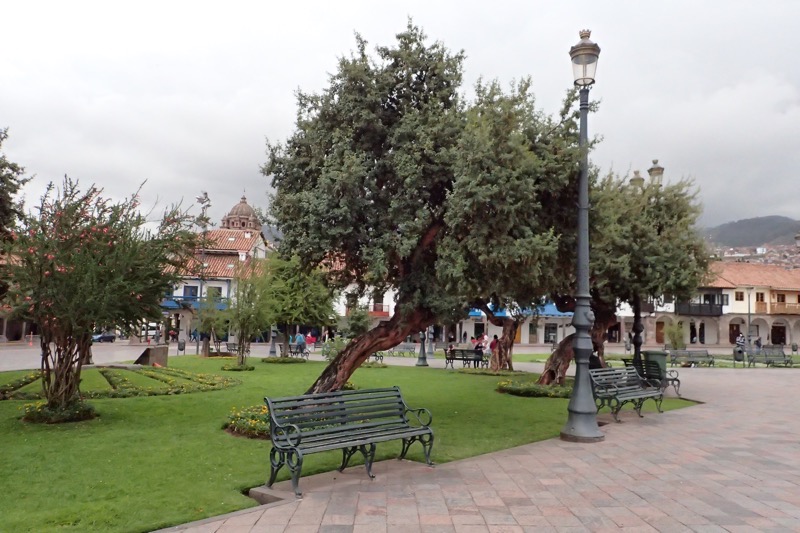
Also in the square is a fountain that contains a weird mishmash of cultural iconography – a very French influenced 17thC looking fountain with a statue of Patchacuti perched on top. Apparently the fountain was a gift from a one time mayor or governor, who had been in the US and had bought back a statue of a native American Indian and had gifted the fountain topped by this inappropriate statue to the city… many, many people hate the statue as having nothing to do with the city and the people of Cusco and according to Luis, one night in the late 60s three drunk journalists threw ropes around the native American Indian statue, tied the rope to a car and ripped it off the top of the fountain. That statue turned up for a while in a museum, but has since been lost again, and it was replaced by the city’s favourite ancestor, Patchacuti.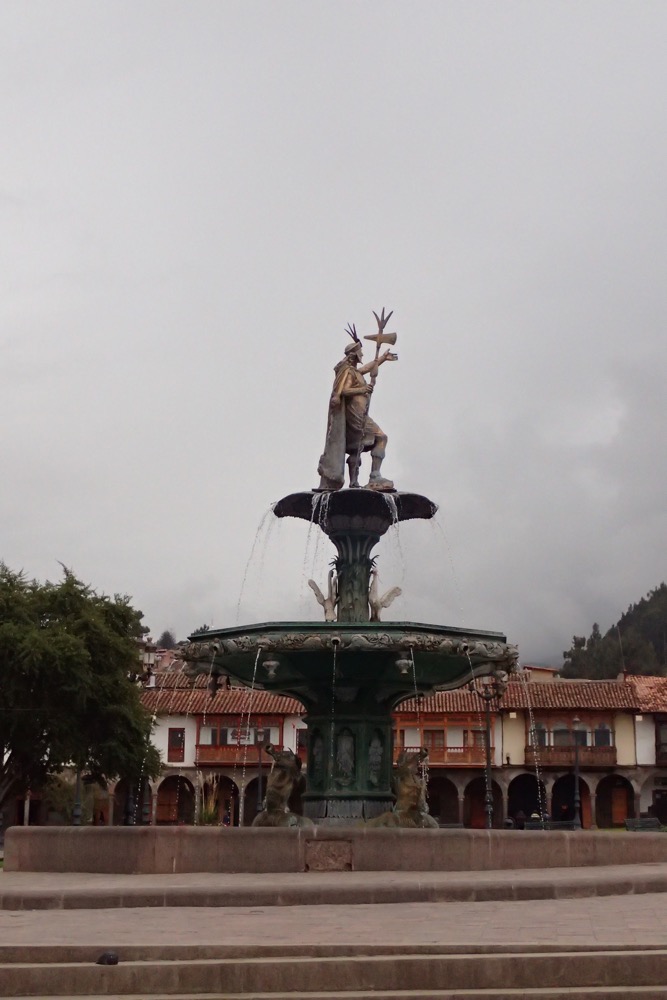
The Cathedral Basilica of Our lady of the Assumption…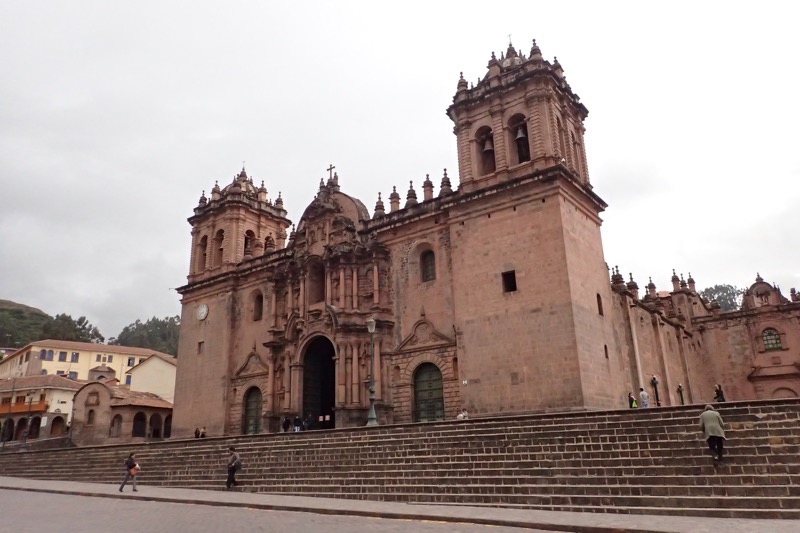
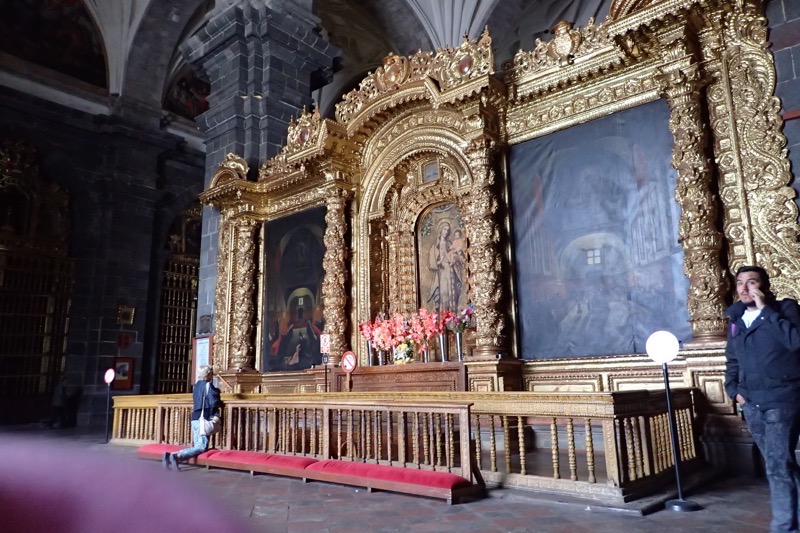
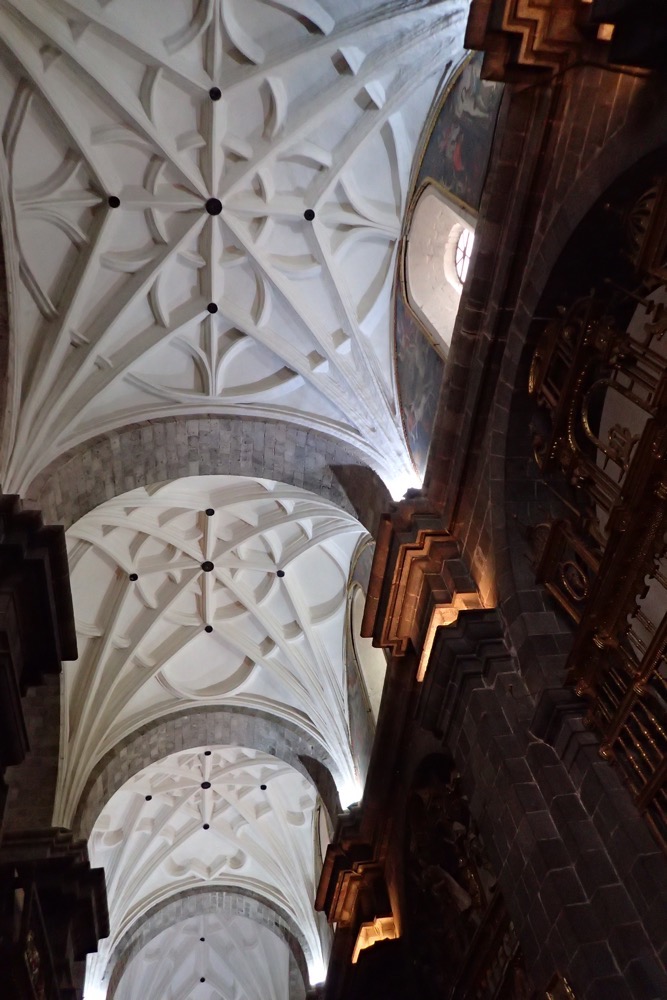
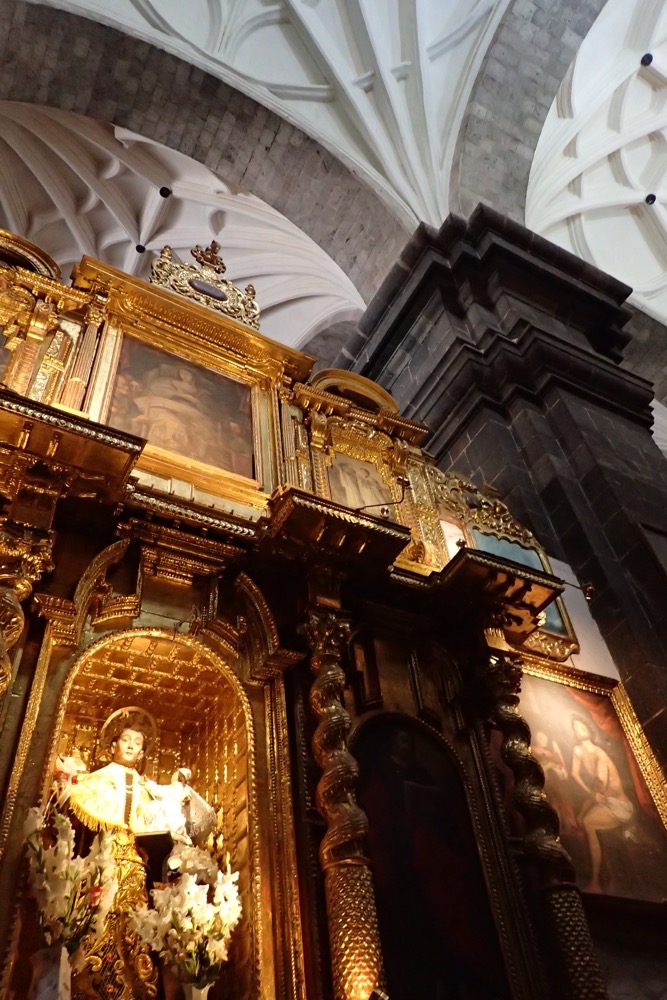
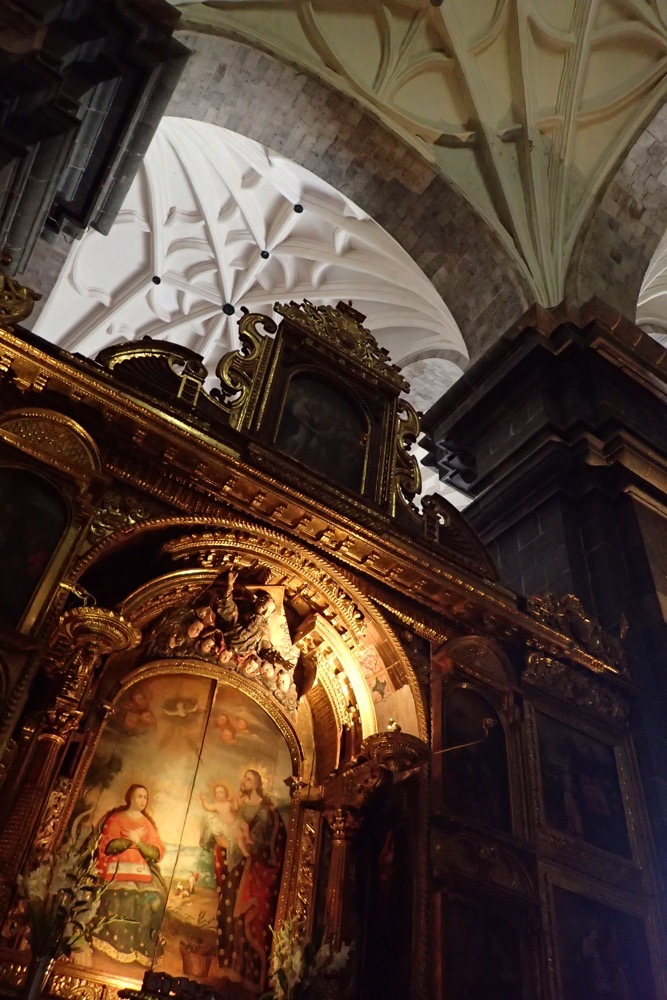
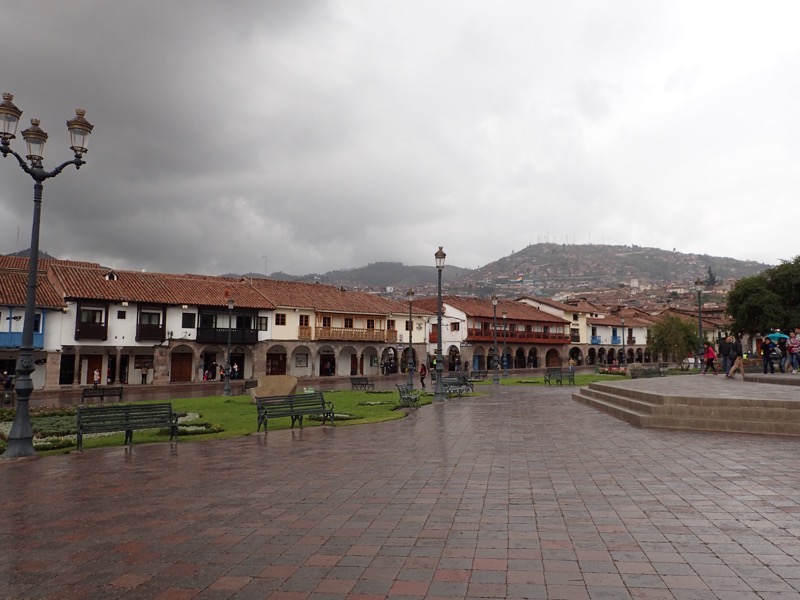
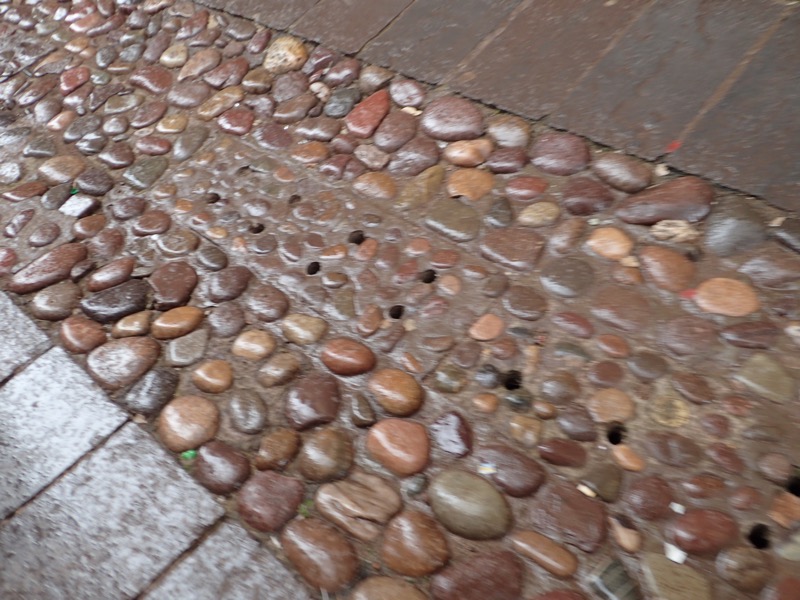
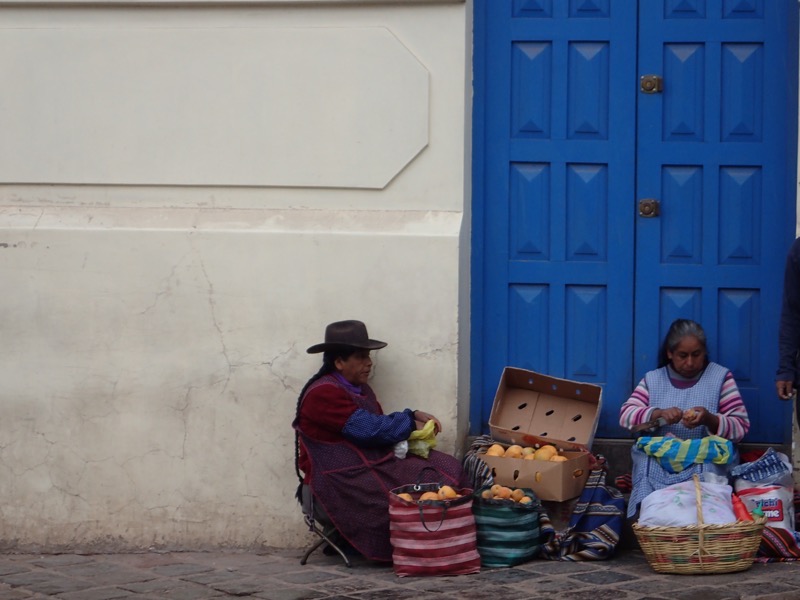
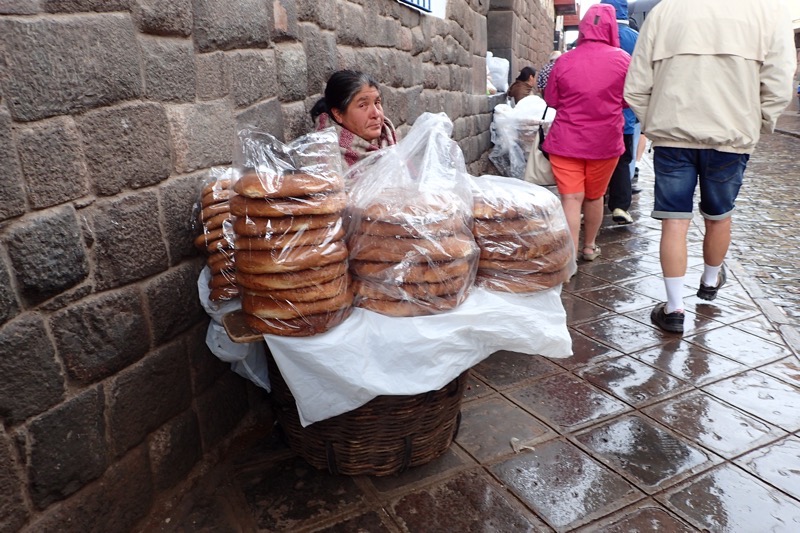
After leaving the plaza, we went for a bit of a walk, taking in the sights of the city until we reached Qurikancha, or the Golden Place, which was the most important temple dedicated to the Sun God at the time of the Incan Empire. According to the Spanish chronicles, Quirkancha was said to have had a large solid golden disc that represented the Inca Sun God, Into as well as walls lined in gold, and a Sacred Garden in front of the temple that had a garden of golden plants with leaves of gold, silver and life sized llamas all made in solid gold.
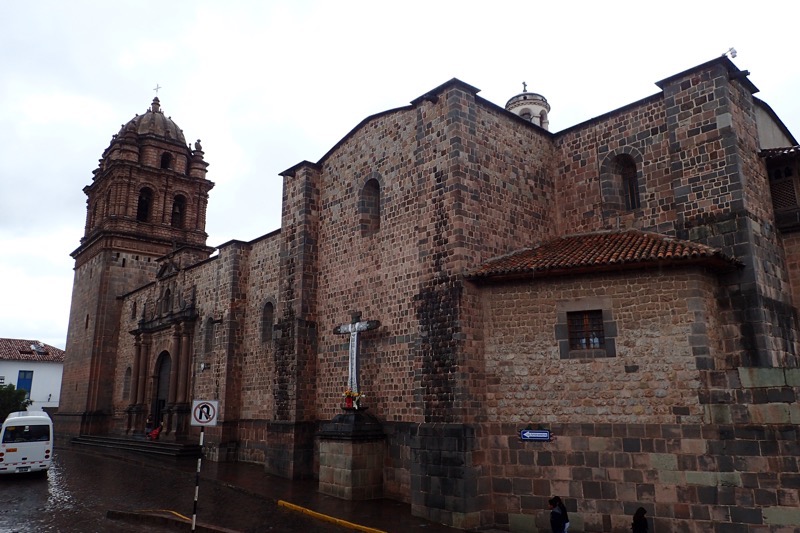
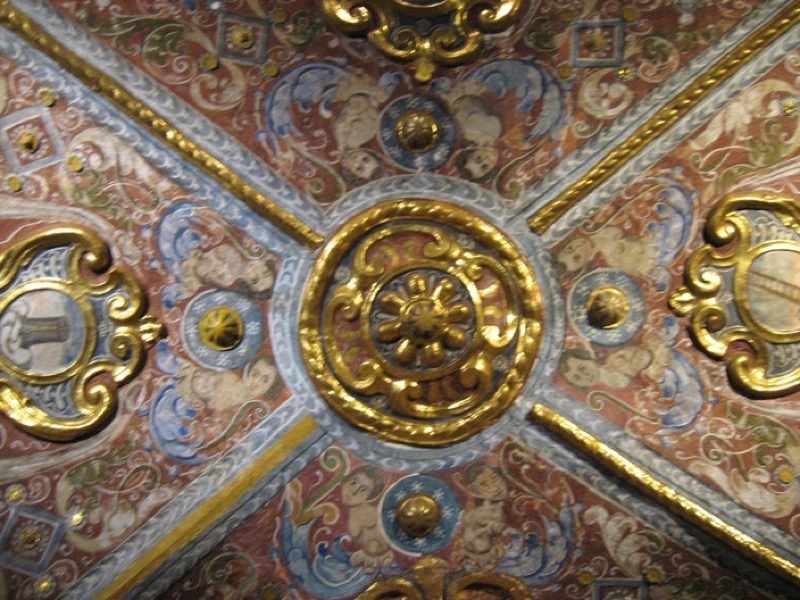
Naturally the Spanish invaders plundered the city of its wealth and destroyed its idols, altars and shrines. However, they unusually chose this site to build on top of the semi-destroyed Sun Temple a convent called the Convent de Santo Domingo, which is built in a Renaissance sale, with a single baroque tower and a large cloistered courtyard in the centre. The building that remains now has strong and noticeable Inka and Spanish sections that show the alterations and renovations the building has undergone.
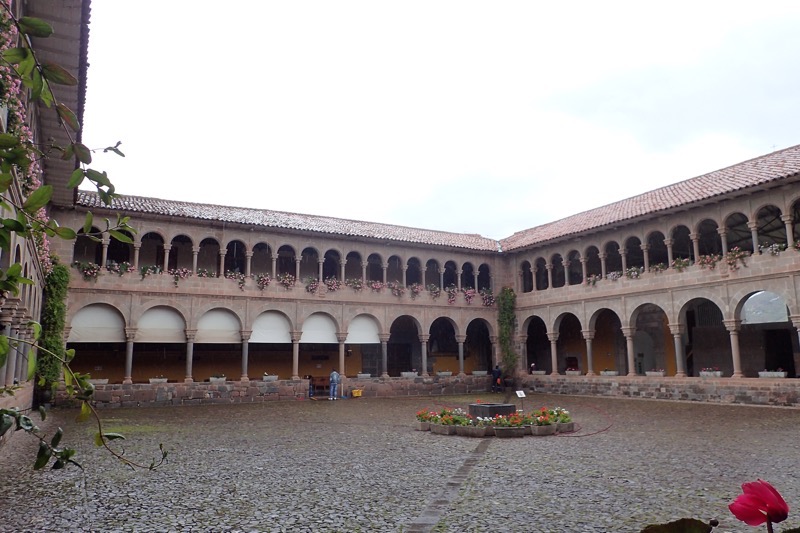 The Spanish Cusco school of art…
The Spanish Cusco school of art…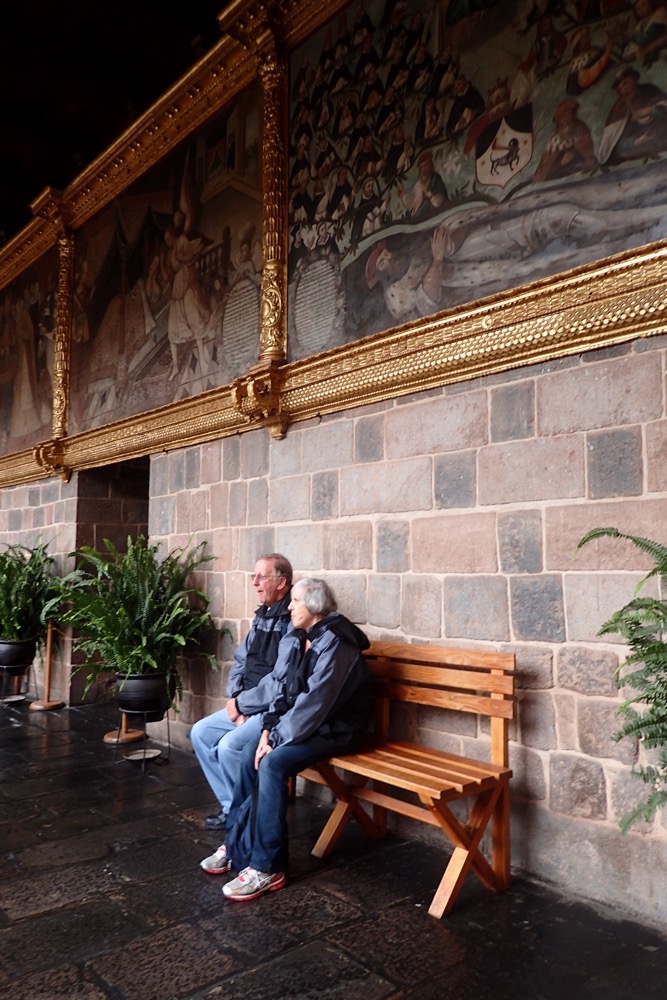
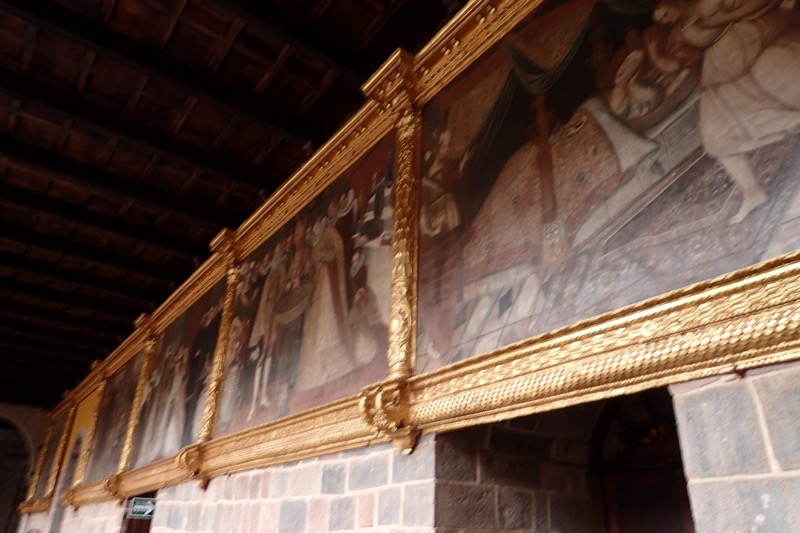
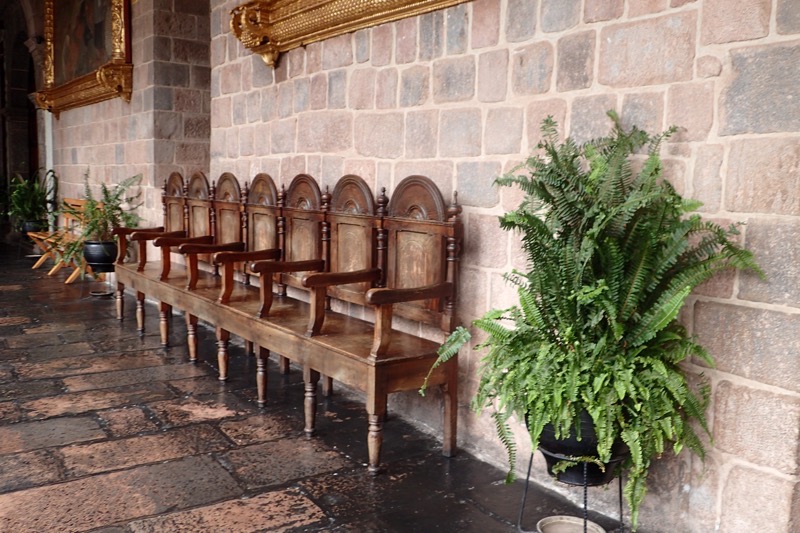 The Moon chamber – that was once covered in sheets of gold.
The Moon chamber – that was once covered in sheets of gold.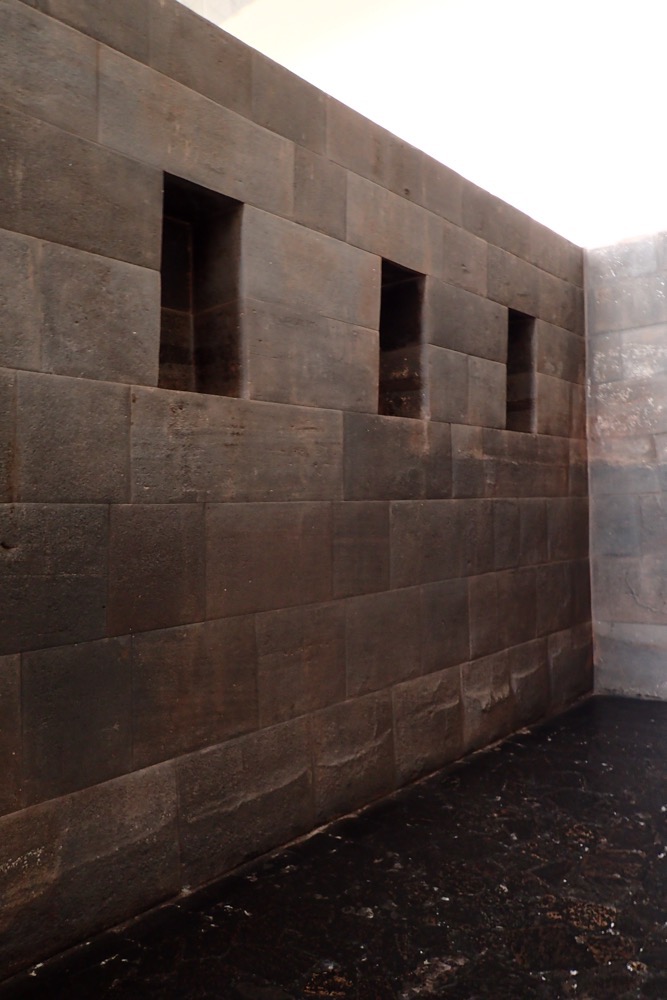 Spanish arches evident that were built above the Inka stonework.
Spanish arches evident that were built above the Inka stonework.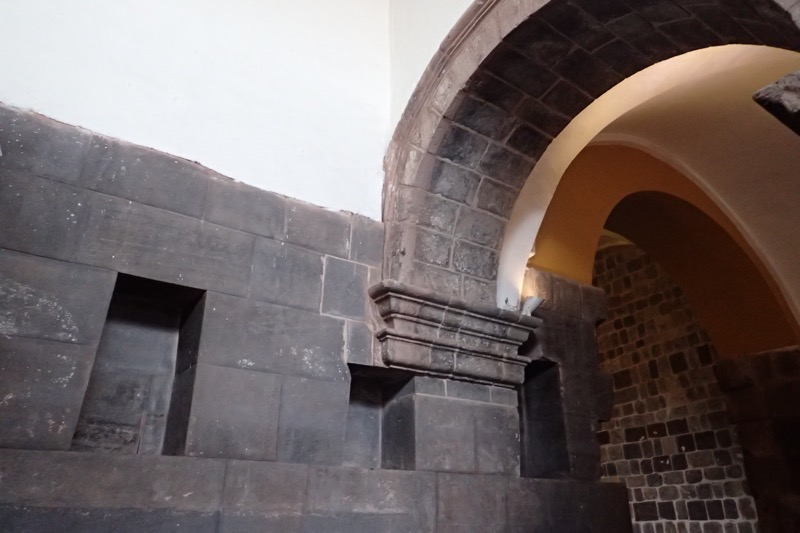 Niches in the Inca walls are quite common – this temple has these black lines (possibly painted with blood) running across the stonework at about heat height – the origin and purpose of the lines are unknown.
Niches in the Inca walls are quite common – this temple has these black lines (possibly painted with blood) running across the stonework at about heat height – the origin and purpose of the lines are unknown.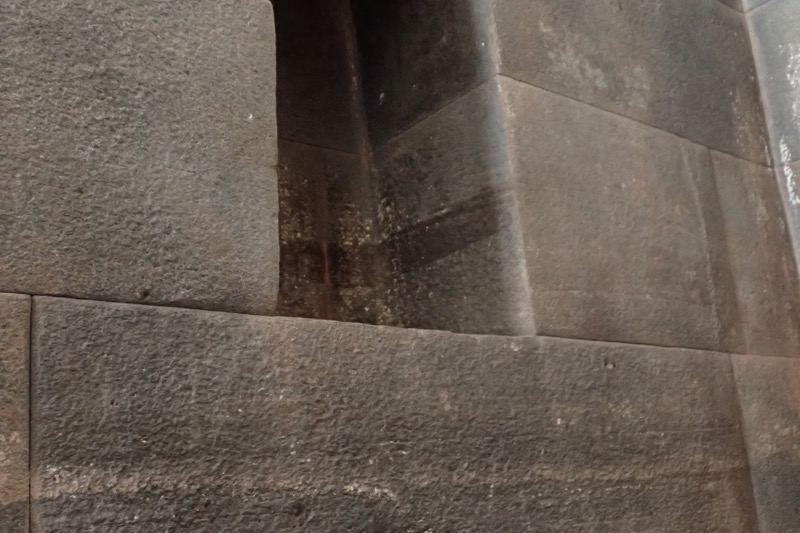 When the Spanish plundered Quirkancha, they damaged much of the ancient stonework – this section of split open rock shows how precisely the stones fit together.
When the Spanish plundered Quirkancha, they damaged much of the ancient stonework – this section of split open rock shows how precisely the stones fit together.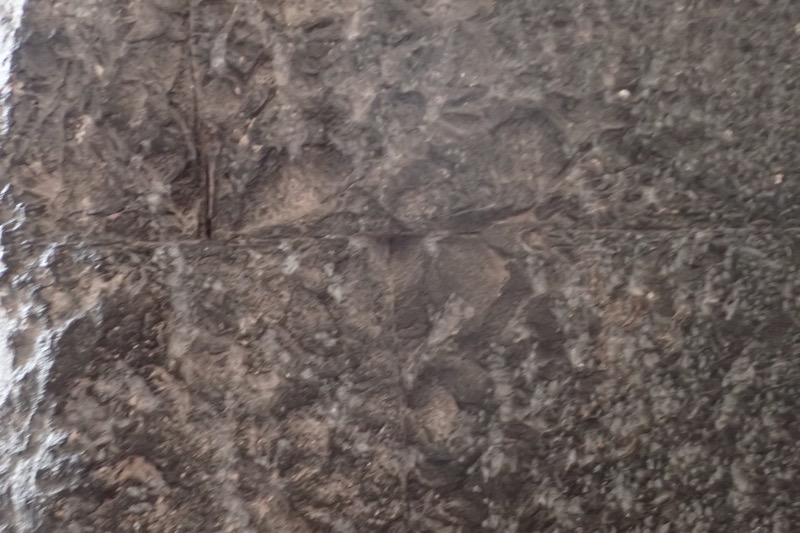 A replica of the Sun God disc… it is full of symbology representing the beliefs of the Inka people and elements of their world that carried great import. Sun, Moon, Ocean, Lakes, the Milky Way, the Southern Cross, Pumas, rainbows, the earthly world, man, woman, homes – this item is full of important iconography.
A replica of the Sun God disc… it is full of symbology representing the beliefs of the Inka people and elements of their world that carried great import. Sun, Moon, Ocean, Lakes, the Milky Way, the Southern Cross, Pumas, rainbows, the earthly world, man, woman, homes – this item is full of important iconography.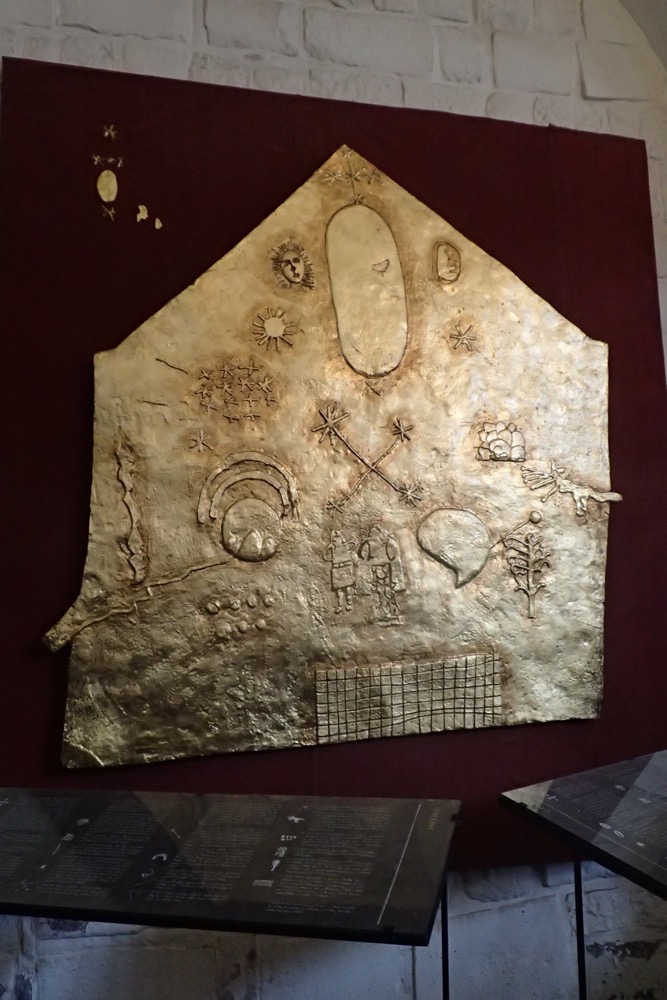
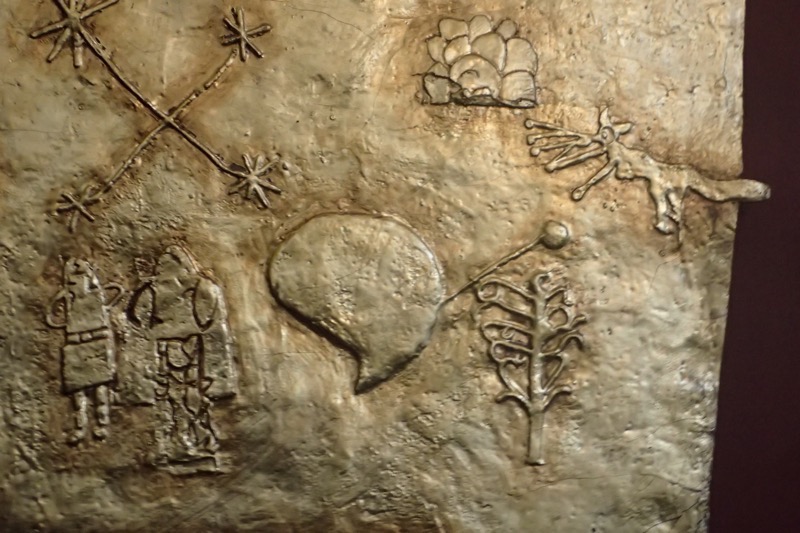 The Milky Way with important Inka recontextualizations – images of llamas are evident in this painting.
The Milky Way with important Inka recontextualizations – images of llamas are evident in this painting.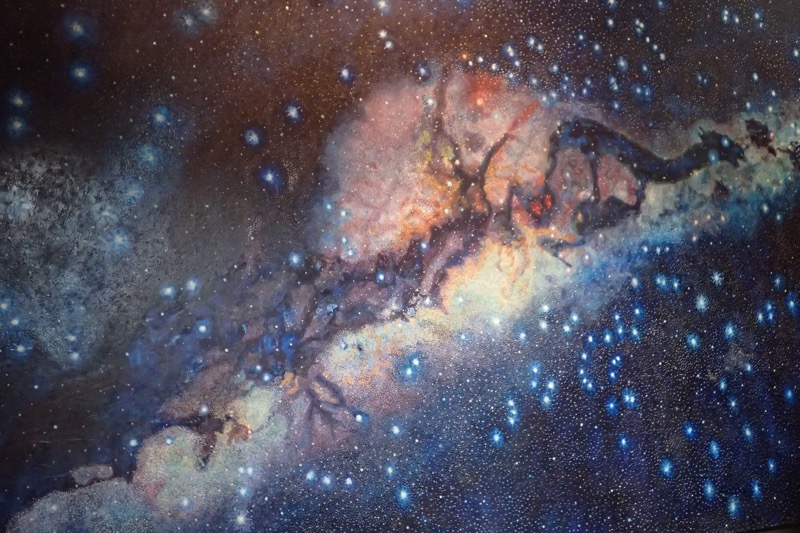 More Spanish archways evident above the Inka stonework. Cusco experienced an earthquake in 1950s and much of the Spanish construction was damaged – but the Inka work survived in tact.
More Spanish archways evident above the Inka stonework. Cusco experienced an earthquake in 1950s and much of the Spanish construction was damaged – but the Inka work survived in tact.
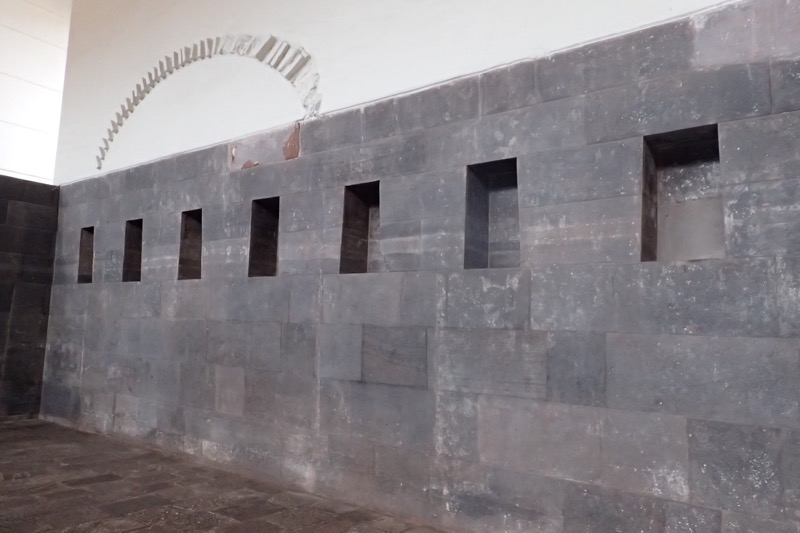 View over Cusco from Quirkancha.
View over Cusco from Quirkancha.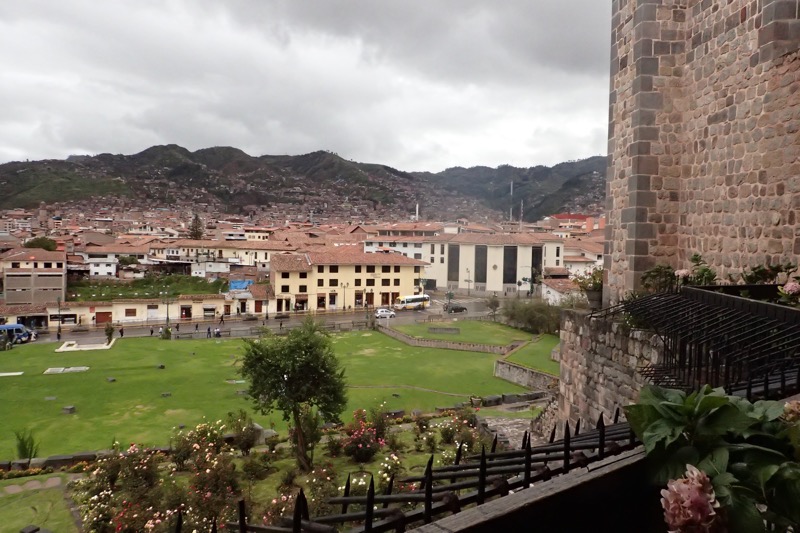
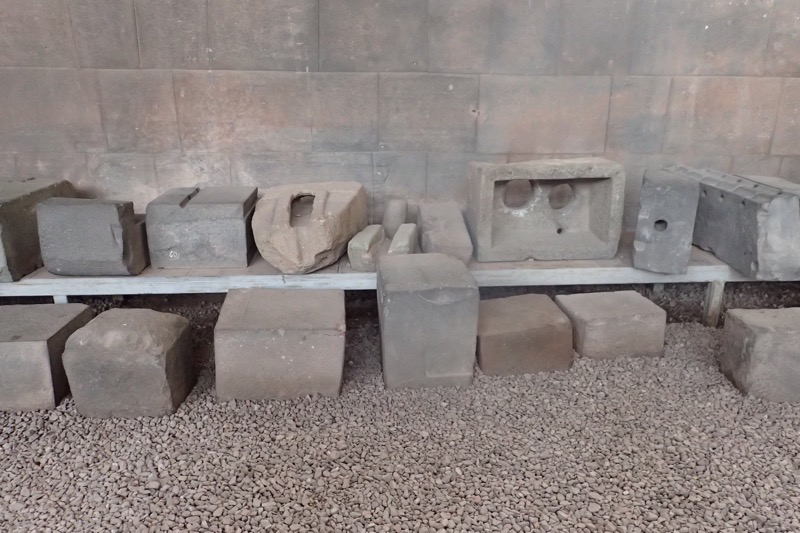 The water space
The water space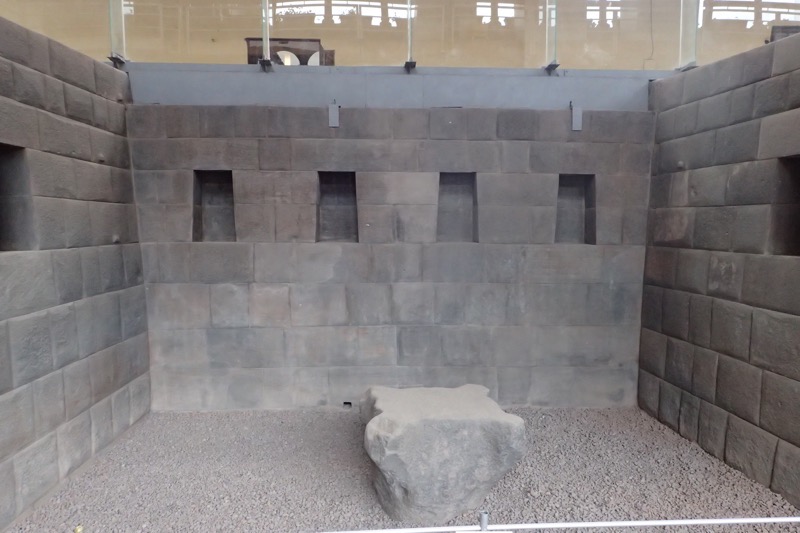
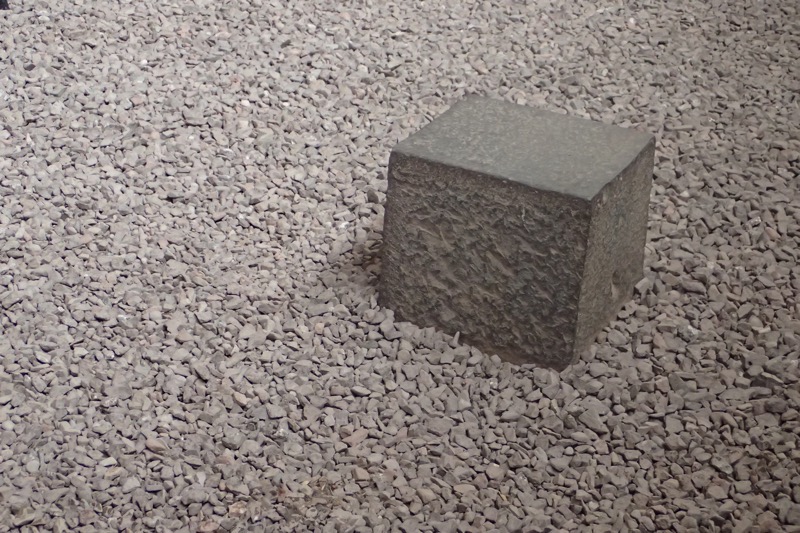 Symmetry and alignment in the stonework windows…
Symmetry and alignment in the stonework windows…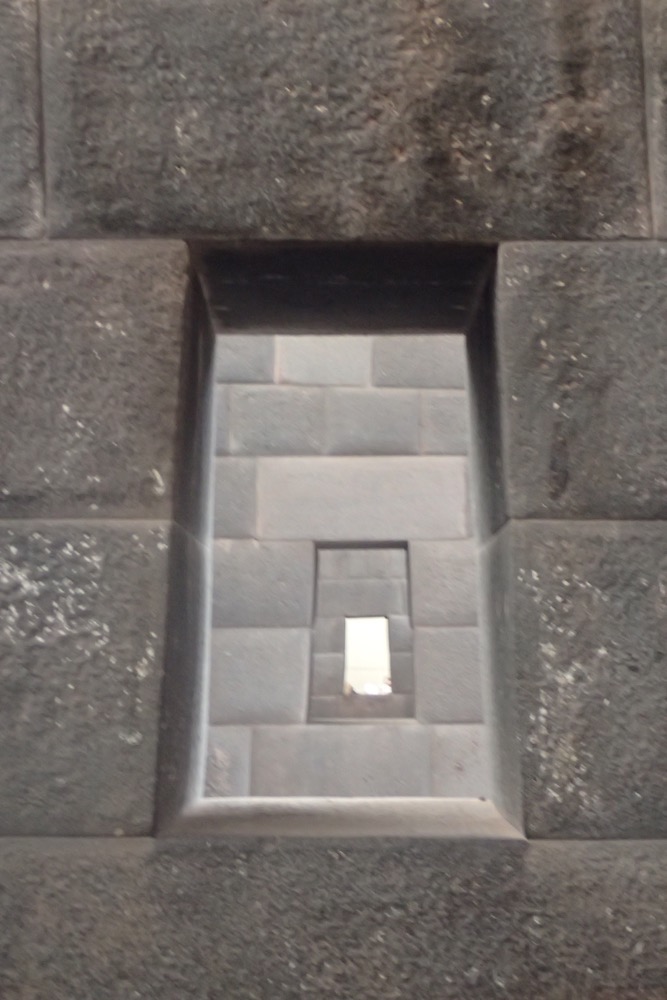 The tiniest ever found, Inka stonework block – about the size of a 10c piece.
The tiniest ever found, Inka stonework block – about the size of a 10c piece.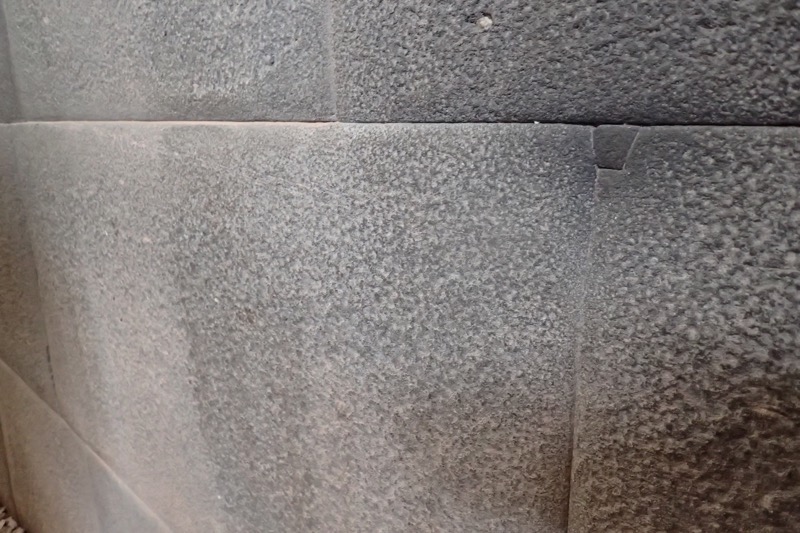 The mosaic on the back of the Cusco fountain where the two rivers meet.
The mosaic on the back of the Cusco fountain where the two rivers meet.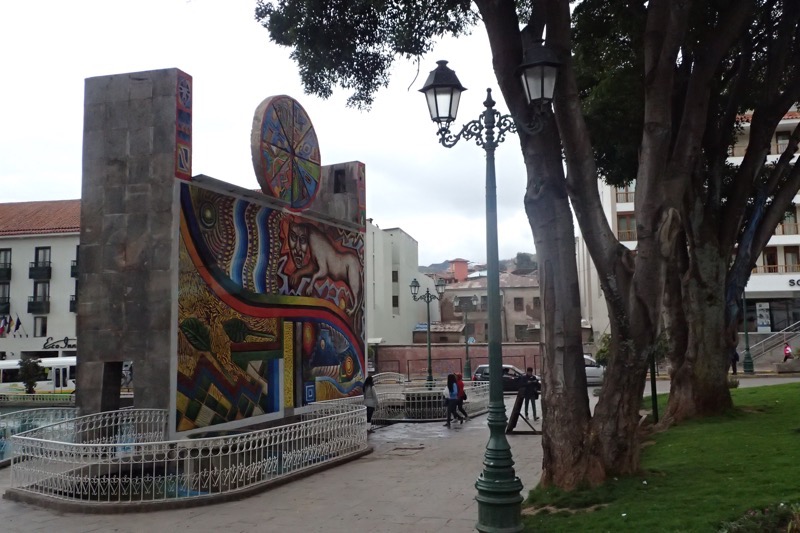 The first train to take people from Ollantaytambo to Aguas Callientes.
The first train to take people from Ollantaytambo to Aguas Callientes.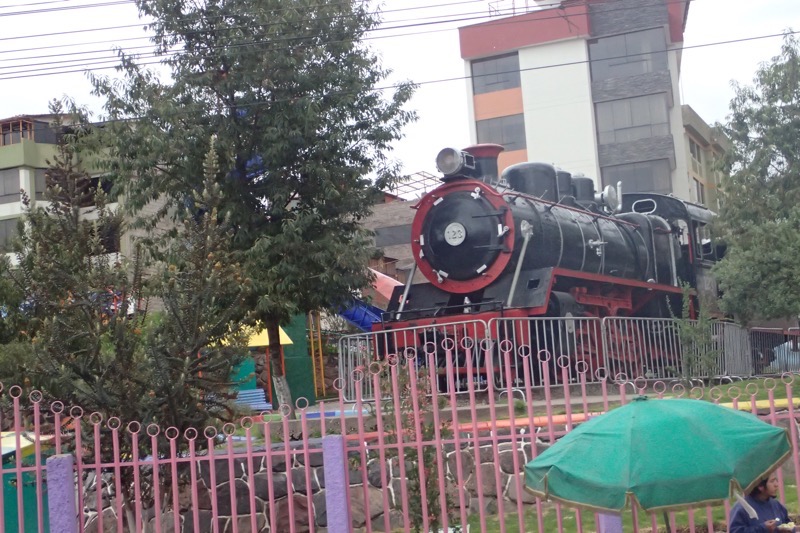
I have had simply the most exhilarating, exciting, exhausting, magical visit to Machu Picchu and Cusco with Jaime and Luis from Patagonia Shorex. I loved the buzz and atmosphere of Aguas Callientes, and enjoyed the lovely glass dome train rides to and from Ollantaytambo. The local people were wonderful, the markets were colourful and vibrant and fun, the entire experience is something that I can not recommend highly enough. I feel like we few, we very fortunate few, who got to experience Machu Picchu and Cusco with Jaime have all had an experience of a lifetime. While our experience in a few days off a cruise ship is very likely not even remotely comparable to that experienced by those who undertake the trails and trials of walking the Inca Trail from Cusco to Machu Picchu… I am certain this is the best way to see Machu Picchu from the ship with a tight time frames.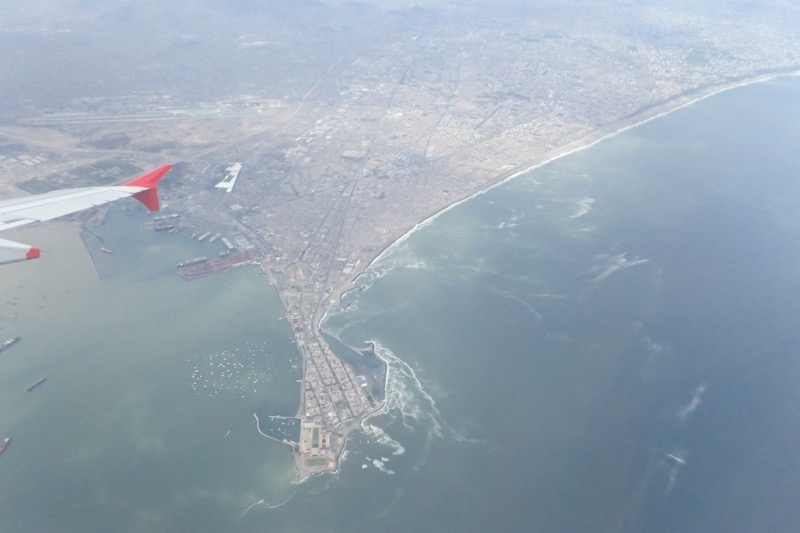
On the way back to our beautiful Sea Princess, Jaime said to us, “My friends, I am very sorry we will not be going to Tahiti together – your ship, I see her from the plane in the dock, and she is still here waiting for you.”, but not once was I worried we were not going to make it back to our ship – Jaime was so organised and so in control of our group’s schedule and our movements, and I had every confidence that all contingencies were covered, and he could solve any unexpected issue that might arise.
So, do yourself a favour, if you are planning a World Cruise, or doing a Circle South America out of Florida or LA… contact Jaime and book to go to Machu Picchu with him – it is a decision you will never regret, and an experience you will remember forever.

That is high praise for your tour! We had our doubts that the Machu Picchu tour would be too rushed or problematic off next year’s world cruise, but you are making it sound so inviting, thanks for your detailed blog.